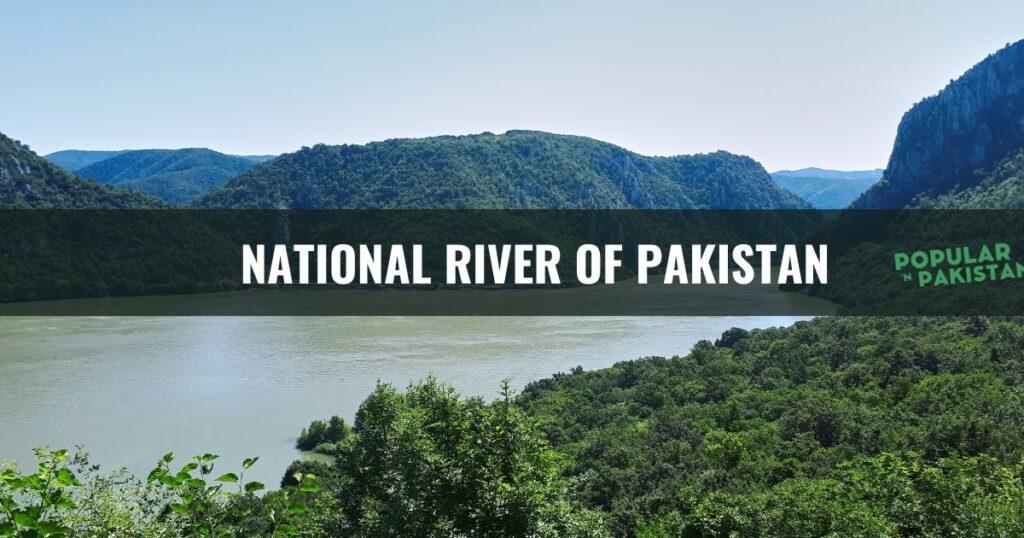The National River of Pakistan is the Indus River, known as a transboundary river. It is a trans-Himalayan river of South Asia and East Asia. Ravi river is the longest and largest river in Pakistan. The Indus River starts its journey from western Tibet, China, then bends towards Jammu and Kashmir, India. From there, it comes to the Arabian sea of Karachi, Pakistan. The total length of the river is 2,000 miles, about 3200 kilometers.

Ranging Area of Indus River
The drainage area is approximately 45,000 miles and 1165000 kilometers. About 175000 sq mi and 453000 square kilometers remain in the Himalayas region, Hindu Kush, and Karakoram range. The remaining river water bends towards Pakistan.
The river’s annual flow is more than the Nile River, Tigris River, and Euphrates Rivers. Throughout that region, the Indus River National River in Pakistan covers temperate forests and plains.
Origin of National River of Pakistan
South Asia’s Punjab region is located in the northern Indus Valley. Sindh’s southern part is home to a large Indus river delta. Regional cultures are associated with the Indus River, Pakistan’s national river. The Indus Valley (National River of Pakistan) civilization was called the Bronze Age. The Indus Valley civilization flourished in the 3rd millennium BC.
In the Rigveda hymns, Punjab was mentioned, and the Saptha word was mentioned in the Avesta religion, which means seven rivers. The Indus River (National River of Pakistan) was explored in the Classical period under Persian king Darius’ supervision in 515 BC.
India, Afghanistan, and Iran share the Indus river, Pakistan’s National River. Alexander the Magnificent and Greek forces crossed this river in historic times. Muhammad Bin Qasim, Mahmud Ghaznavi, Babur, and other Muslim armies crossed the Indus river to enter Punjab and Gujrat.
Importance in Pakistani Agricultural Production
Pakistan’s economy depends on the water resources of the Indus valley (National River of Pakistan). The maximum agricultural production of Punjab and Sindh provinces depends on the Indus river National River of Pakistan. The meaning of the word Punjab is”land of five rivers”.Pakistan has five rivers like Jhelum Chenab, Ravi, Beas, and Sutlej. These five rivers gather into the Indus river. Many industries take water from the Indus river. Once, it had the name stand River(sat means seven and Nadi means river).
Read More: NILI RAVI BUFFALO
Effect of weather on the river
The weather directly affects the river as the river diminishes in winter. While in the monsoon, from July to September, its banks become flooded due to heavy rain. The evidence of the shifting direction of the river is observed in the earthquake of 1816.
Delta of Indus River National River of Pakistan
The Indus River (National River of Pakistan) geography starts in Karachi, Pakistan. The Indus River delta ranges from approximately 16,000 sq mi to (41,440 km²); it is about 130 miles across. The Indus River delta contains clay, and the soil is infertile and swampy. The Indus River delta’s annual rainfall ranges from 10-20 inches.
At the mouth of the Indus River, Hyderabad is 130 miles north of Pakistan’s capital. Karachi is west of the delta. Delta region temperatures range from 70-85°F in July, and 50-70°F in January. Therefore, the river region contributes greatly to migrating birds.
The delta of the Indus river (National River of Pakistan) , the National River of Pakistan has a flow of 180 billion cubic meters, approximately 240 billion cubic yards annually. Irrigation systems, dams, and barrages have been constructed since 1940.
Mammals
Dolphins are found in the Indus River, the National River of Pakistan. These dolphins are a subspecies of South Asian dolphins. These are considered endangered species by the World Wildlife Fund as only 1,000 dolphins exist. In the Indus River, 2 Otter species are also found. There are smooth-coated otters everywhere along the river, and they are located in the northeastern highlands.
Fish
More than 180 species of freshwater fish are found in the Indus river. Twenty-two species of fish are only found in this river. In earlier cultures, fish had a significant role, as in the Indus valley civilization, the sign of fish was commonly used to show the meaning of stars or gods.
Effect of the Indus River on the Economy of Pakistan
The river is considered a primary source of water supply for the agricultural use of Punjab and Sindh. It is regarded as the backbone of Pakistani farm production.
Irrigation System
During the Indus civilization, local people built canals. But during the Kushan Empire and Mughal Empire, engineers built canals. In 1850, the British East India Company constructed the modern canal system. This irrigation system is the “largest contiguous irrigation system developed over 140 years.” Diversion of river water causes issues. For example, the irrigation system causes increased soil salinization and reduces crop yield.
Water Distribution Agreement
In 1960 India and Pakistan signed a water control treaty. In the agreement, Pakistan was guaranteed to receive water from the Indus riverNational River of Pakistan.
Dams of the Indus Basin
The Indus basin project consists of two main dams. The Mangla dam was built on the Jhelum river, and the Tarbela was built on the Indus river. Dams are the primary electricity source for industries and urban regions. In addition, the irrigation system and dams are the sources of irrigation water for crops like wheat, cotton, and sugarcane.
Vegetation and wildlife
The reduced inflow of fresh water into the Indus river threatens vegetation and wildlife, causing deforestation, pollution, and global warming. Dams are the leading cause of isolating the Indus river dolphins from other waters upstream.
Pollution
Factories located along the river cause water and atmospheric pollution. Pollutants found in river water are the main reason for endangered dolphins. Sindh Environment Protection Agency has banned polluting factories under the Pakistan environment protection act 1997. Pakistan’s government has banned fishing from Guddu Barrage to Sukkur. The Indus river brings plastic into the sea.
Effects of Climate Change on the River
Qin Dahe, the former head of the China Meteorological Administration, mentioned the threats of fast melting ice glaciers and global warming.
“Temperatures are rising four times faster than elsewhere in China, and Tibetan glaciers are retreating faster than in any other part of the world. In the short term, this will cause lakes to expand and bring floods and mudflows. But, in the long run, the glaciers are vital lifelines of the Indus River. Once they vanish, water supplies in Pakistan will be in peril.”
Richard Holbrook, a U.S. diplomat, stated that falling water levels in the Indus river could precipitate World War III.
Conclusion
The Indus River is recognized as the National River of Pakistan due to its historical, cultural, and economic significance to the country. It is a symbol of Pakistan’s heritage and plays a crucial role in the lives of millions of people. This makes it a cherished natural resource of the nation.

